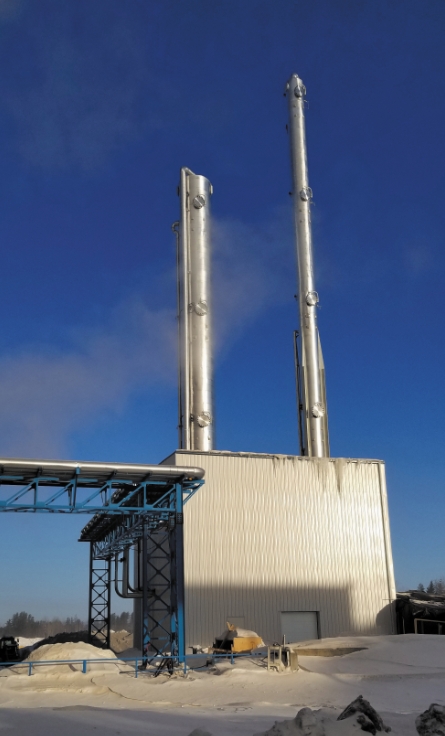
News
Carbon capture unit to divert CO2 to greenhouse
May 14, 2019 By Greenhouse Canada
 Image from: CO2 Solutions
Image from: CO2 SolutionsA carbon capture unit has been successfully deployed at a pulp mill in Quebec, where the captured carbon dioxide will be reused by an adjacent greenhouse facility.
CO2 Solutions announced that it has completed its first CO2 capture unit project, installed at the Resolute Forest Products (RPF) pulp mill in Saint-Félicien, Que. Producing a minimum of 30 tonnes CO2 per day, the captured CO2 will be used by Serres Toundra greenhouses.
An audit performed by independent consulting engineering services firm, confirmed that the amount of thermal energy required by the reboiler of the unit is 2.4 GJ/tonne-CO2. According to a release, this energy is entirely provided by the pulp mill through residual, low-grade energy (i.e. hot water) that has little to no value. The amount of electrical energy reportedly required to operate the unit translates into a cost of C$7.35/tonne-CO2 .
“With respect to CO2 quality, an analysis of the samples drawn from the unit confirmed its high degree of purity which was well within the stringent guidelines required by greenhouse operators,” notes CO2 Solutions. “This purity level was obtained even though the Unit draws raw and unpolished flue gas from the pulp mill’s lime kiln, which mimics conditions similar to those found in cement plants and other industrial applications.”
RELATED
- New carbon capture technology at Quebec greenhouse
- Waste Heat Tapped By Major Quebec Grower
- Massive cuke greenhouse opens in Quebec
This event marks many ‘firsts’, says CO2 Solutions, including the first commercial deployment of an enzymatic carbon capture process, the first carbon capture unit in the forest industry, the first carbon capture from unpolished emissions of a lime kiln, and the first unit to make extensive use of C-PVC as a low-cost material in a cabon capture unit.
It’s also reportedly the first capture unit using only residual thermal energy in the form of hot water, creating no parasitic load on the host plant, a critical factor in reducing the overall cost of carbon capture. The enzymatic process used does not include use any toxic materials or inputs, and generates no toxic wastes, effluents or emissions, says the company.
Funding for the Saint-Félicien CO2 capture plant was obtained through grants from Sustainable Development Technology Canada (SDTC), a loan from Canada Economic Development (DEC), and financial support from the Green Fund through the Technoclimat program of Quebec Energy Transition (Transition énergétique Québec). Earlier research and development costs had been subsidized, in part, through grants from the Natural Resources Canada Energy Innovation Program.
The unit is expected to be operating at commercial capacity in the coming weeks, sending clean captured CO2 to nearby Serres Toundra greenhouses.
Print this page